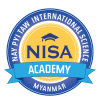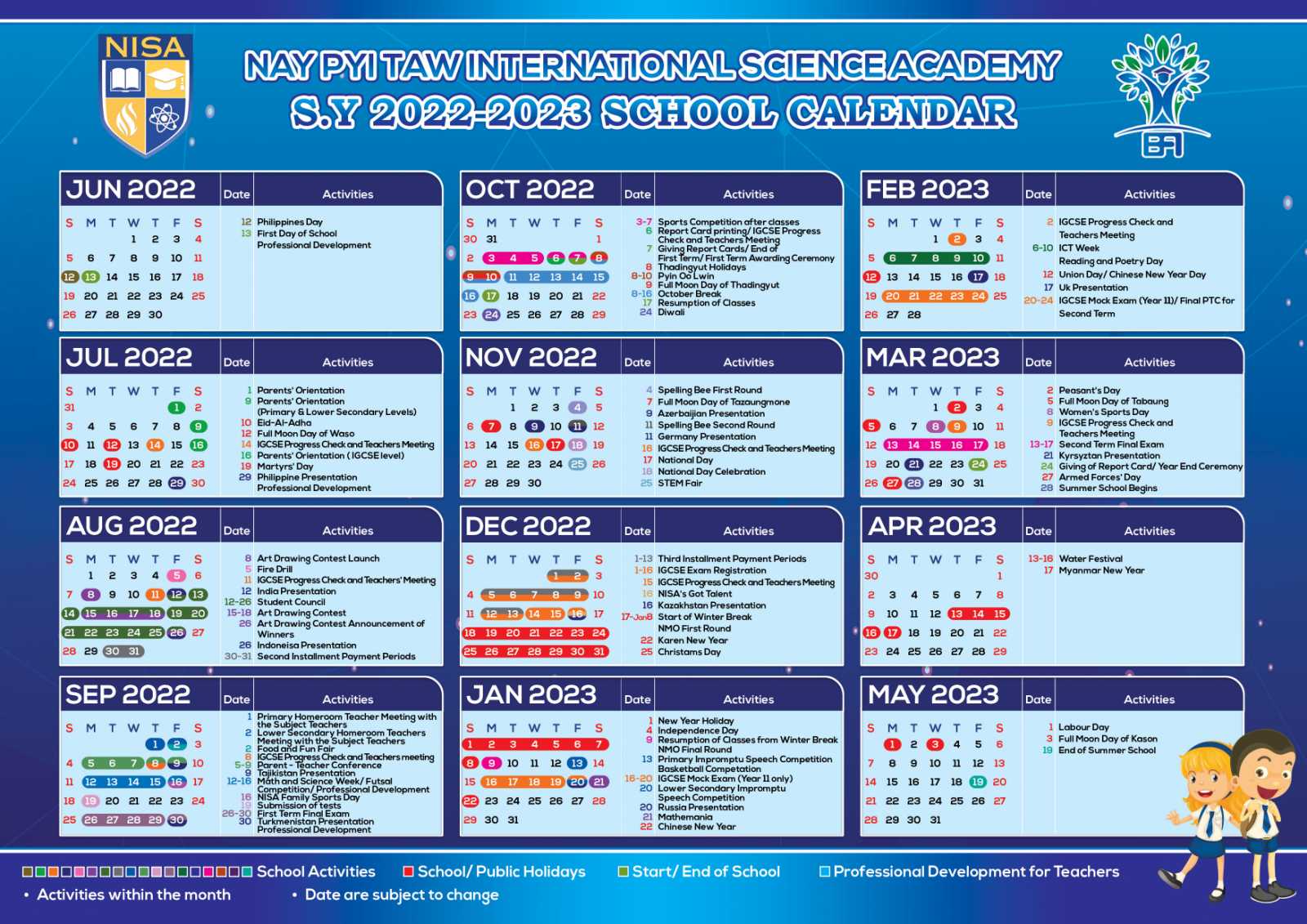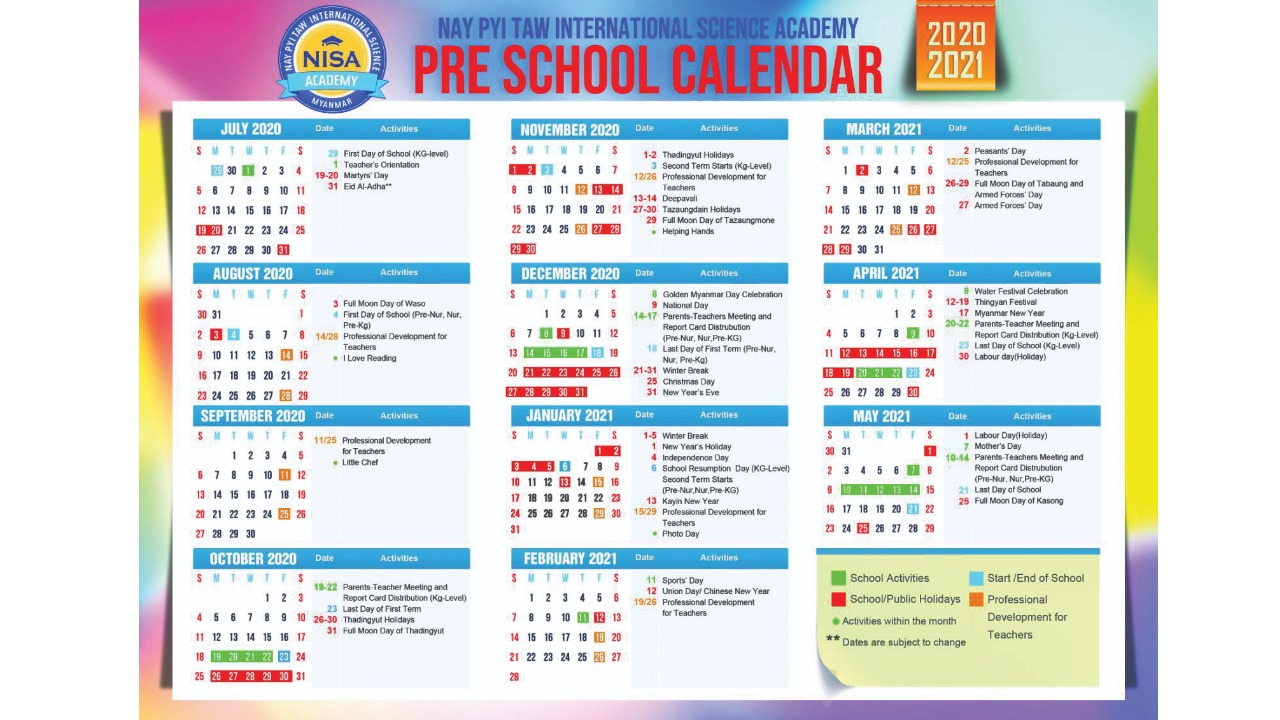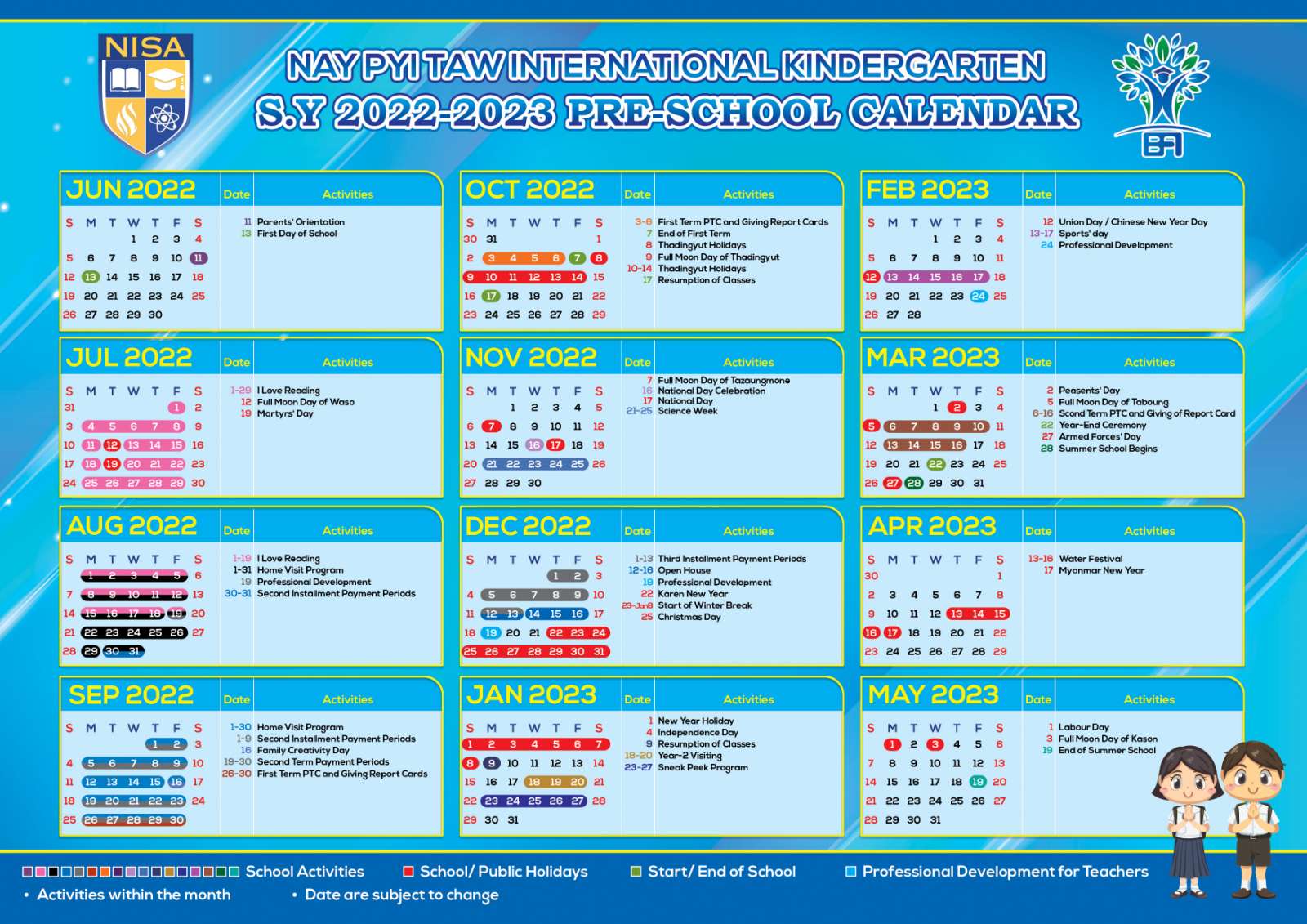Secondary School Programme is designed according to Cambridge International Secondary 1 curriculum Students build on the solid foundations laid in the earlier years in the core subjects of English, mathematics and science. In addition, they enjoy the more specialized subjects of Myanmar Language, history, geography, music, art, ICT and PE. This curriculum provides them with the knowledge, skills and values needed in a fast changing world.
- Students are assessed through two rigorous testing options: Cambridge International Secondary 1 Checkpoint and yearly progression tests.
- A variety of teaching techniques are employed to ensure that instruction is meaningful, effective and relevant to the diversity of the developmental needs of this age group.
- Students are involved in more structured activities like projects, presentations, experiments, essays, debates, Olympiad studies, research papers, and inter-school competitions in various fields such as math, science, sports, English language and art.
- Students are encouraged to take part in community service activities such as visiting homes for the elderly and/or orphanages.
| Secondary School (Year 7 – 9) |
| No |
Subject Name |
No of Periods |
| 1 |
English Language A / English Language B Pre Intermediate* / Intermediate* |
10 |
| 2 |
Mathematics |
6 |
| 3 |
Science |
4 |
| 4 |
Geography |
2 |
| 5 |
History |
2 |
| 6 |
Myanmar Culture |
3 |
| 7 |
Art |
2 |
| 8 |
ICT |
2 |
| 9 |
Music / Elective Language |
2 |
| 10 |
PE |
2 |
| 11 |
Etiquette |
1 |
English Language A
Cambridge Secondary 1 English enables learners to communicate confidently and effectively and to develop the skills to respond to a range of information, media and texts with understanding and enjoyment. English Language A courses are based on fundamental language competencies, which help students foster cross-cultural understanding, critical thinking, excellence in writing. Secondary school students are given chances of extending their ability to use English through Research Paper programme, speech contests, essay competitions, local and/or international debate competitions, annual Spelling Bee language contest.
English Language B*
We have students of varied English language learning backgrounds; therefore, we offer English B classes for students with a shorter period of exposure to and engagement in the English language. There are two levels of English B, being ‘Intermediate’ and ‘Pre-intermediate’, the aim of which is to elevate students skills to English Language A level over the years through a structured process.
Cambridge English as a Second Language places emphasis on developing listening, speaking, reading and writing skills as well as vocabulary development and language awareness. Learners are exposed to a range of vocabulary with opportunities for using language in personalised, meaningful ways and developing the language skills they will need to access classroom materials in English across school curricula.
Mathematics
Cambridge Secondary 1 Mathematics curriculum is a foundation for further Mathematics education and provides a structure objective for mathematics in High School level. Mathematics courses are designed to promote student-centered learning through pair work, group discussions and collaboration. The curriculum framework explores through six concepts: number, algebra, geometry, measure, handling data and problem solving. It focuses on principles, patterns, systems, functions and relationships, so that learners apply their mathematical knowledge and develop a holistic understanding of the subject.
Science
Cambridge Secondary 1 Science curriculum framework covers four content areas: scientific enquiry, biology, chemistry and physics. Scientific enquiry is about considering ideas, evaluating evidence, planning investigative work, and recording and analysing data. The scientific enquiry objectives underpin biology, chemistry and physics, which are focused on developing confidence and interest in scientific knowledge. Environmental awareness and some history of science are also part of the curriculum. The science knowledge of our students is extensively strengthened by variety of experiments in modern and well-equipped laboratories.
Physical Education
Physical education curriculum in secondary school targets developing students’ agility, coordination, and flexibility. This is achieved through educational games, gymnastics, athletics, and football and basketball trainings. Students are also encouraged to participate in intra-school and inter-school sports activities and competitions such as annual Street ball, Table tennis, and football tournaments.
Music
Music curriculum in secondary school focuses on three core areas of musical experience; performing, composing and listening. Students have various opportunities to perform both as individual and/or group in activities such as morning assemblies, talent shows and different ceremonies. Students understand the basic musical structure styles and genres. Our students learn to play different instruments such as piano, keyboard, violin, flute and etc.
ICT
Technology is one of the most significant subjects in 21st century. We dedicate a reasonable amount of time and energy to raise awareness of developments in information, communication and technology in everyday life. Constant investment in technology laboratories help teaching and learning up to date along with latest, fast computers, smart boards, smarts pens and projectors. Further knowledge in ICT as computer science can be achieved through Robotics club and other extra curricular activities.
History
Secondary School History curriculum teaches World History. Students are inspired to learn history to get lessons from the past and prescribe to our modern problems but are not forced to memorize dates, events, and other boring information. Through its focus, it helps students foster critical thinking and independent learning as well as understanding the history of humanity.
Art:
Secondary School Art curriculum includes art, craft and design, and focuses on human creativity. It is designed to inspire and challenge students to create and invent their own works of art, craft and design. In addition to creativity students also develop critical thinking skills through the production of art works. Students learn to be proficient in drawing, painting, colouring and composition concepts.
Etiquette
Etiquette is the intentional and proactive effort to instil in our students important universal values such as caring, honesty, fairness, responsibility and respect for self by modelling and teaching good character through emphasis on universal values that we all share. This is achieved through activities, projects, student-homeroom teacher discussions during homeroom time and student reflections.
Myanmar Culture
Our schools follow an international curriculum, however, it is important for Myanmar students to understand their own culture to be able to make connections to other cultures. Therefore, Myanmar Culture classes are included in the curriculum for local students and uniquely designed to engage students in different elements of Myanmar culture such as language, history and arts.
Myanmar Culture is also offered to non-local students and it also includes Myanmar language for foreigners at beginner/elementary levels. This helps non-local students to adapt to Myanmar language and culture, and address the challenges that they can face in their daily lives.
Elective Language
This course aims to develop basic communicative skills in the target language and strategies for effective language learning. It also helps students foster an understanding of different cultures.
Geography
Geography curriculum covers themes from different parts of the world, and focuses on population, settlement, land shape, natural environment, and social and economic development. The curriculum is designed to inspire students to explore and investigate contemporary global and regional issues. It enables students to acquire skills to understand the relationship between people and environment.





